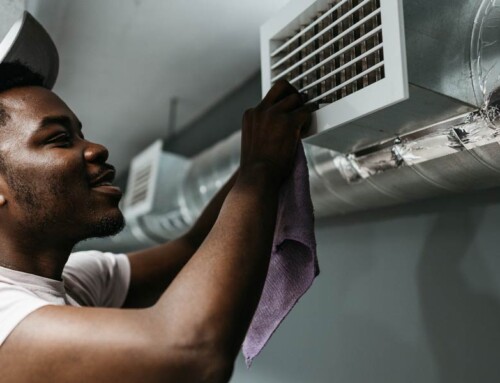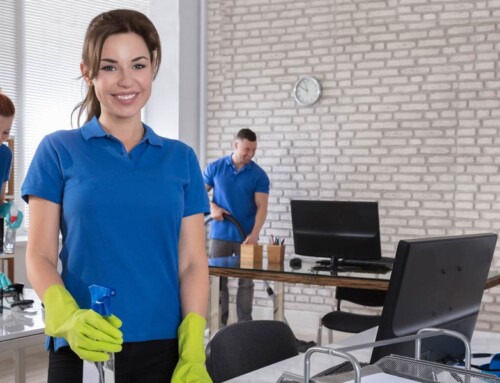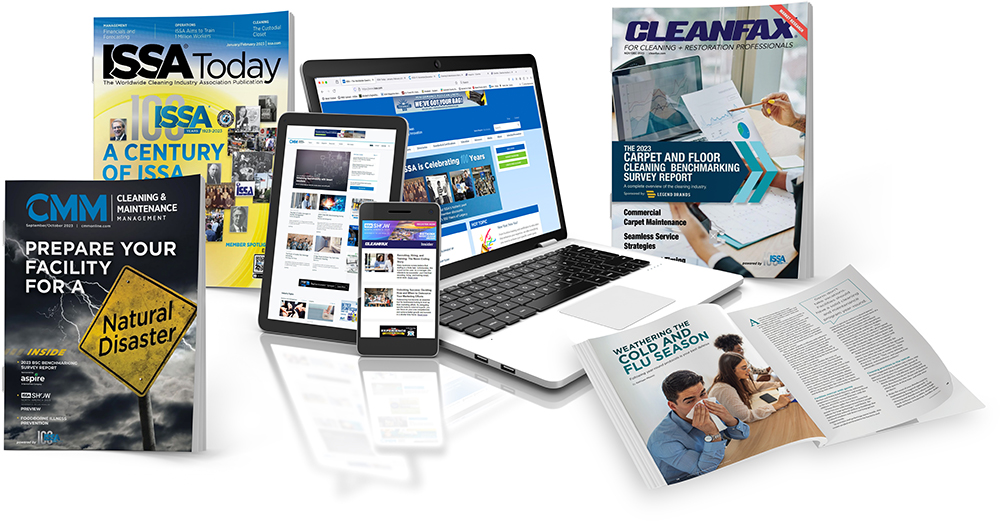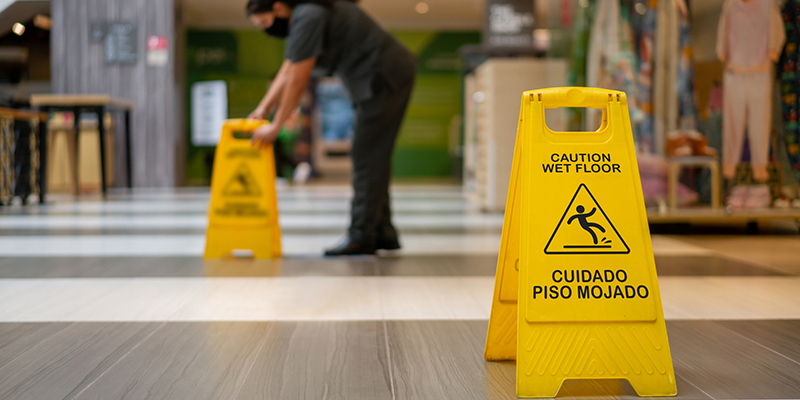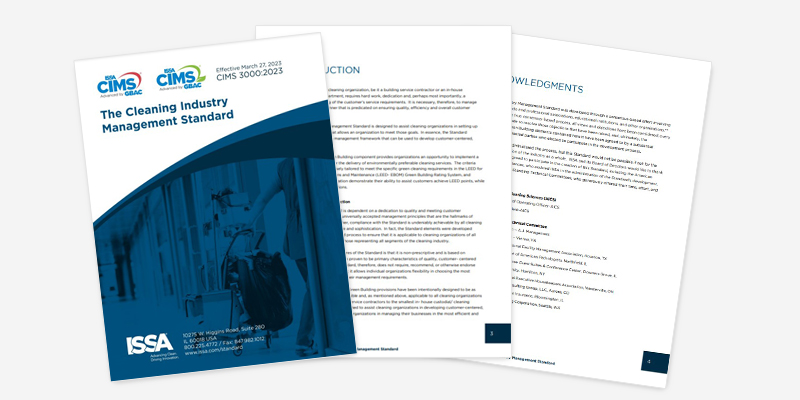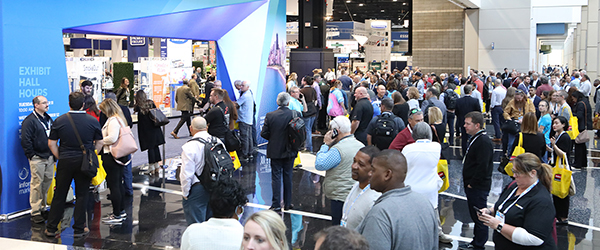IAQ Uncovered

Trying to keep surfaces clean from contamination can be a daunting task when you haven’t considered improving the indoor air quality (IAQ). Transmission of contaminants by touching is undoubtedly a concern. Still, many of the particles that create our “dust” on surfaces come from the air, and when the air quality is poor, the surfaces will inevitably be more challenging to keep clean.
Assessing the IAQ in any environment can seem like a complicated subject, and it can be confusing. When you ponder the thousands of chemicals that could pollute the air, tens of thousands of microbes that could soil the surface, and the “toxic soup” of contaminants that characterizes the indoor environment, how do you determine what the problems are so you can decide what the solution might be?
In our basic IAQ training, we teach that the causes and contaminants affecting indoor air quality can be reduced to seven key components. Once you understand these seven components of indoor air quality, it becomes easy to categorize each contributor and address the ones that need to be reduced, controlled, or eliminated to improve the indoor environment.
Particulates
What we often call “dust” is comprised of all kinds of particulate matter. Pollen, insect parts, dead skin cells, pet dander, and other submicron “stuff” are constantly floating around in our indoor environment.
In the morning, when you look at a shaft of light coming through the window, did you know that the vast majority of that “stuff” is dead skin cells? That’s right! Unlike snakes, which shed their skin once a year, human beings constantly shed their skin, and that submicron particulate becomes airborne. Because it is so light, it is difficult to filter, and thus, much of it remains suspended, waiting for us to breathe it into our lungs.
I’ve often said that I’m uncomfortable going into a movie theatre because that shaft of light is exposing the dead skin of all the people who have been in that room over the last few days. Fortunately, the natural filtration system of our nose and lungs traps much of that before it can enter our body. With the help of our immune system, our body is not overwhelmed.
However, those particulates do settle out through natural ionization and air movement processes, becoming the dust that we clean from our surfaces. If we did a better job of addressing them while they are still in the air through filtration and proactive air purification technologies, we would have less dust on our surfaces. Since using effective passive filtration and proactive air purification in our home, we have seen significantly less dust on our ceiling fans.
Odors
Those of you who have pets or teenagers in your home are aware that odors can be a significant problem. Masking them certainly doesn’t eliminate them, and my definition of “clean air” is the “absence of contaminants,” so odors should be eliminated from our indoor environments. But odors are often just symptoms of some other issue, so where do odors come from?
I mentioned just two, but there are many sources of odors in our environment, including cooking, potpourri, candles, second-hand smoke, and mustiness. Sometimes, it’s easiest just simply to remove the source. You could, for instance, tell your grandma to smoke outside. For instance, in mold assessment work, identifying the source of the mold and removing it should leave the environment clean and odor-free.
Some odors, however, are inevitable, and removing the source might be impossible. You just had new flooring installed in the living room. You just painted the baby’s room. Your teenage sons have come home from the basketball court, and the whole house smells like a locker room. Odors happen!
Some filtration systems are effective in reducing odors, but those require that you get the odor to the machine, and that is not always easy. Proactive air purification technologies, such as effective ionizers and hydroxyl machines, can make a significant improvement in the environment by oxidizing odors without the use of ozone.
Gases
Gases are sometimes in the form of volatile organic compounds (VOCs) and are often the source of odors. However, even if the odor eventually dissipates (like the smell of new paint), gases at lower, often undetectable levels can be problematic for some individuals. It’s not unusual for one person to notice an odor while another doesn’t. I learned that years ago when my wife could tell when the diaper needed to be changed, and I didn’t have a clue.
Several devices are available on the market that can detect gases that pose a danger, such as carbon monoxide and ozone. One device I have used in my home detects total volatile organic compounds (TVOCs), and by monitoring these, I have been able to identify issues before they become a problem.
Another option, of course, is to remove the source of gases where possible. Cleaning supplies should be stored outside of the conditioned space, not underneath the sink. In commercial environments, putting those in a maintenance room that is sealed off from the rest of the conditioned space is a really clever idea.
The EPA suggests that “the solution to pollution is dilution,” and there is some truth to that. We are big believers in fresh air makeup, often missing from residential buildings, because it can be very effective in reducing contaminants, especially odors.
Temperature
I recently visited a client who had a mold problem in her home and couldn’t figure out why she was constantly having to clean mold off the walls. It was an interesting case study that we discussed in our advanced classes because her practice of keeping it so cold also created negative pressure in the home, drawing hot, moist air from the outside into her house. When that air reached a dew point, mold grew on the walls.
The rate of mold growth varies with temperature, but we have learned that mold can proliferate in both hot and cold environments. Even when it is growing slowly, the mold can still be a problem, producing mycotoxins and mustiness.
Relative humidity
Relative humidity has a significant impact on indoor air quality in various ways. When the relative humidity is too high, the air feels heavy and clammy. It can also exacerbate asthma and allergies. It can create static electricity and also promote the growth of fungi and bacteria. When the relative humidity is too low, it can be uncomfortable, irritate your eyes and mucous membranes, and increase susceptibility to respiratory infections. In fact, at the extremes of high and low, both bacteria and mold can still grow. It may grow more slowly, but it will still grow.
According to the NORMI standard, relative humidity indoors should range between 40% and 60%, which is often achieved through supplemental dehumidification (removing moisture from the air) or humidification (adding moisture to the air). Of the seven components, this is the easiest to control but most often neglected. The efficiency of our HVAC system, keeping the temperature balanced throughout the environment, and creating a more comfortable feeling are all affected by relative humidity.
Addressing the source of the problem is the role of the assessor, but in many cases, finding the source may be impossible, and the solution may be cost-prohibitive. When managing relative humidity, we must sometimes be satisfied to control the symptoms because we can’t identify or fix the cause. In every case, however, controlling relative humidity is a major factor in providing a cleaner, safer, and healthier indoor environment.
Biologicals
Most of us think of microorganisms as living on surfaces, and while that is true, surfaces throughout any indoor environment should be cleaned regularly to remove the dirt and grime that collect on them. One way microbials move from one surface to another is through the air. They don’t have wings but may reside on the dust and, when they get stirred, can be moved from one location to another.
Take a high-intensity light, turn the lights in the room off, and shine the light on the bag of your vacuum cleaner when it’s running. On some of that dust and microbes could be lurking, waiting to land somewhere or be inhaled. Bacteria, fungi, and viruses readily transfer throughout our environment using particulate matter that has not been removed.
Like a magic carpet ride, the bugs can float around on particulate matter, becoming a reservoir for microbial contamination.
Comfort
This component is often neglected but crucial when dealing with contaminated environments. “Comfort” addresses airflow and air movement to prevent stagnant pockets of air in the environment, enhance the passive filtration process, and help distribute the proactive air purification technologies.
I’ve often used the illustration of a leaf floating around on the surface of the pool water, and it never reaches the filter. Like water in a pool, the air in our indoor environment does not flow smoothly from room to room because there are jetties, vortexes, and other pockets of air that prevent contaminants from being easily moved from one room to the next. Practically speaking, some contaminants may linger in the air for days before they drop out or get carried to the filter.
When you see that shaft of light in the morning, move your hand through it, and you’ll see that some of that particulate remains suspended in the air. Can you imagine what kind of suction force it would take to get that from the bedroom to the filter? I love two-stage air conditioning systems that are constantly moving the air with a low-volume fan. I love ceiling fans that rotate slowly to keep the air moving. Even low-volume box fans can circulate air to balance temperatures and prevent the environment from becoming stagnant. Stagnant air makes any indoor environment uncomfortable.
Improving IAQ wholistically
The importance of understanding the seven components of indoor air quality cannot be overstated for individuals interested in wholistically improving the indoor environment. It seems that many people believe filtration is the answer to improving air quality, but, as you have seen, removing particulates from the air, though imperative to creating a cleaner environment, is only one-seventh of the problem.
As we say in class, “Indoor air quality is a multi-faceted problem that needs a multi-strategic solution.”
Addressing all seven components with a thorough cleaning schedule, the removal of contamination, passive air filtration, proactive air purification equipment, fresh air makeup, and air movement will improve the overall indoor air quality. That’s something we all want.
Doug Hoffman is the founder and executive director of the National Organization of Remediators and Microbial Inspectors (normi.org), a not-for-profit training and certification organization for IAQ professionals. His passion has been helping people understand how to live healthier lives indoors and empowering them with the ability to have clean air.


